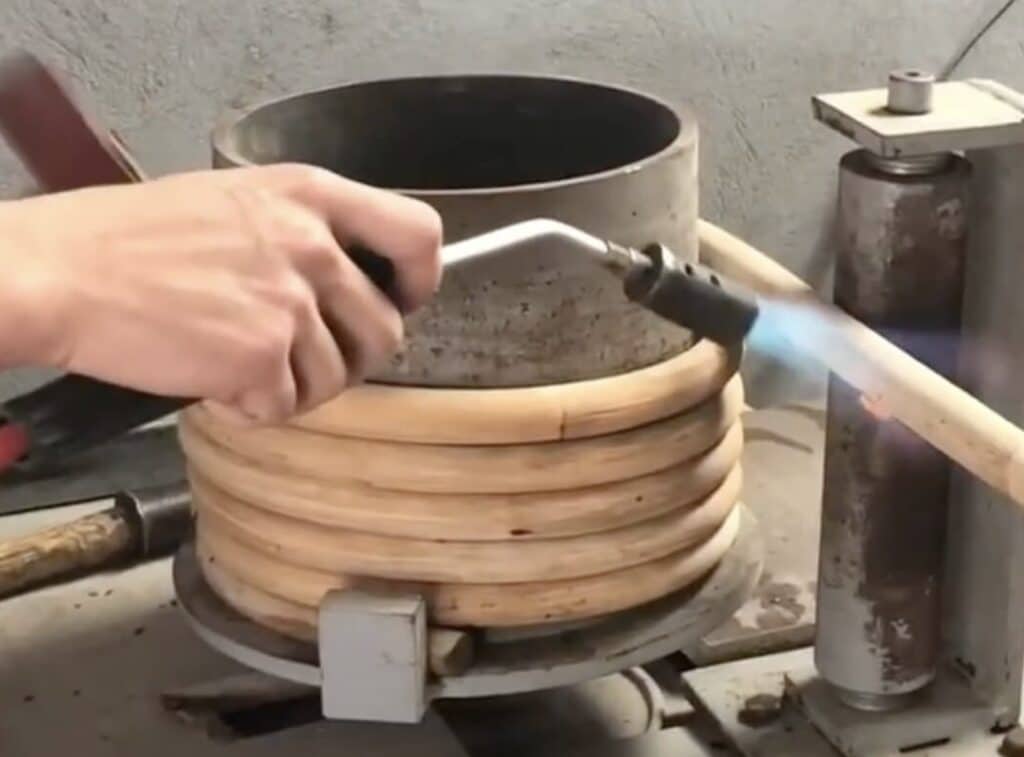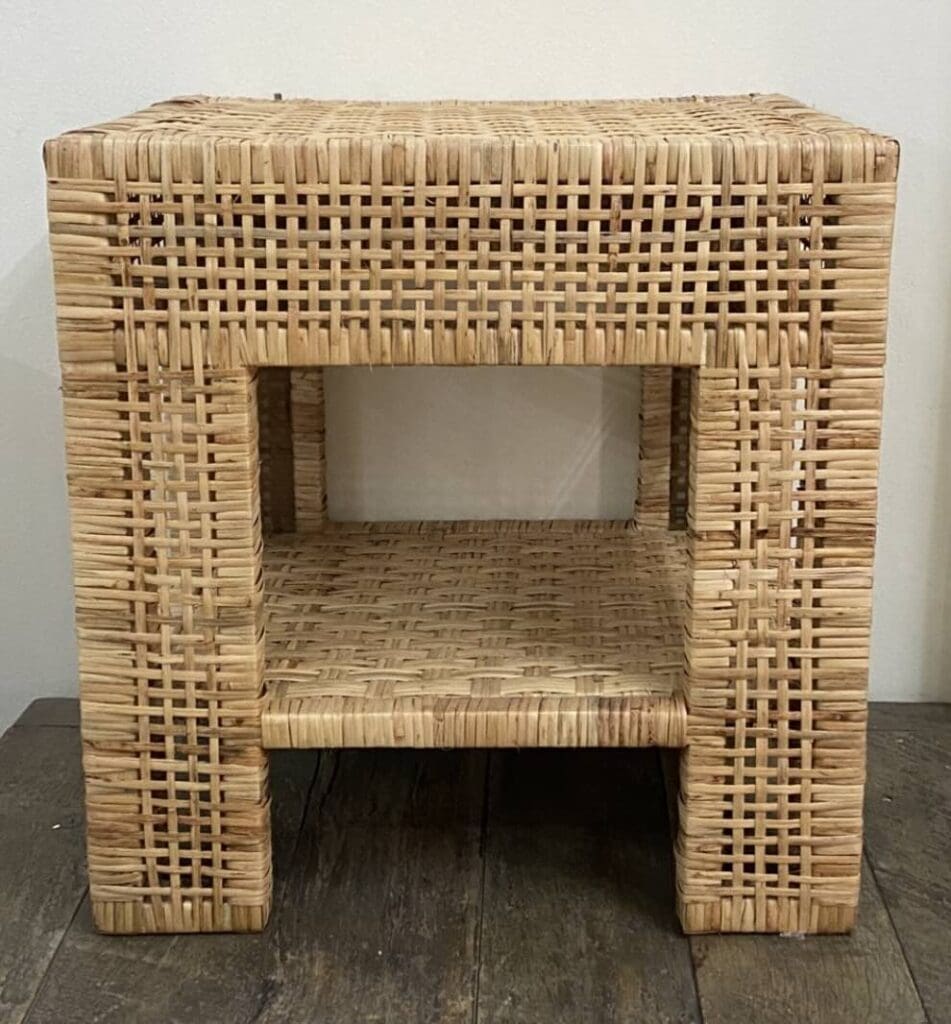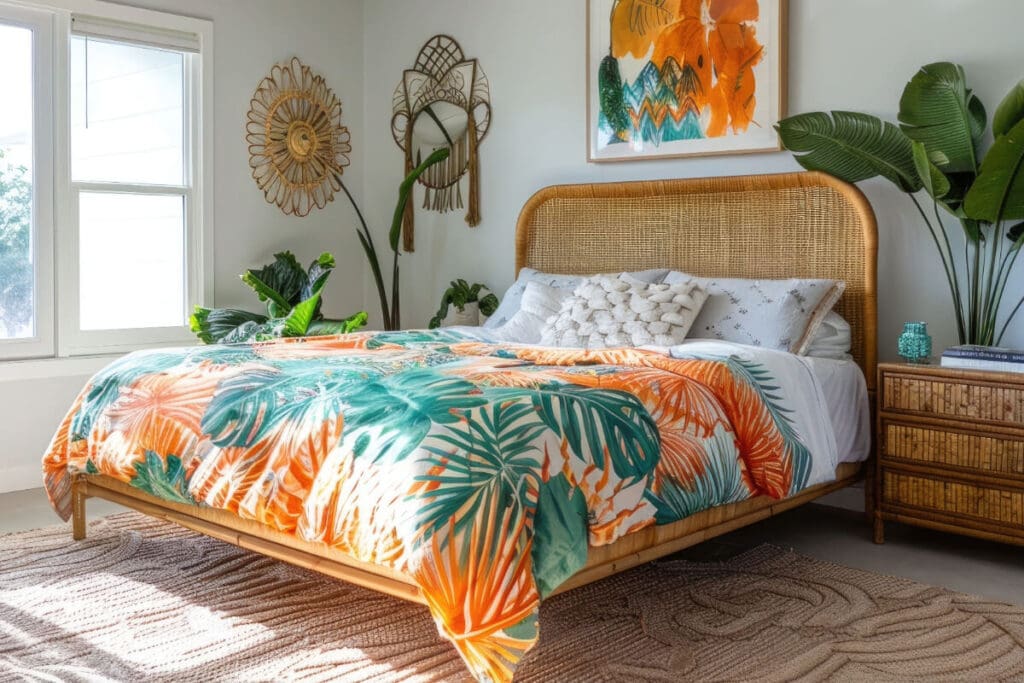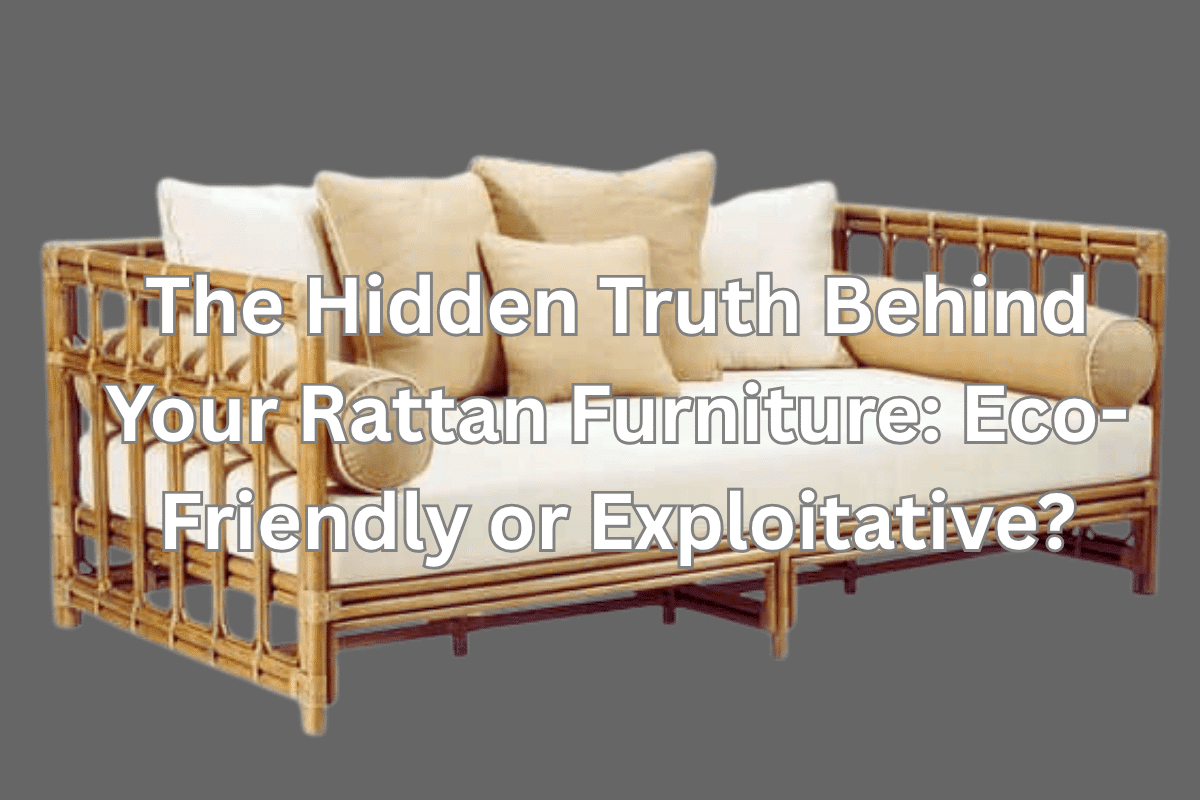Imagine buying a new piece of furniture, believing it’s good for the planet, only to discover a tangled web of exploitation and environmental damage behind it. In this blog post, we’re pulling back the curtain on the rattan industry to reveal the surprising complexities of ethical sourcing. You’ll never look at your furniture the same way again.
At Mondoro, we prioritize sustainability in our sourcing practices. That’s why we ensure that all the rattan we use is sourced responsibly and contributes positively to the environment. Rattan is a rapidly growing material, often regarded as more eco-friendly than traditional wood. By choosing rattan, we support environmentally sustainable practices while minimizing our ecological footprint.
Table of Contents
- The Allure of Rattan: Beyond the Aesthetics
- Unmasking the Supply Chain: A Global Web
- The Dark Side of Demand: Environmental & Social Scars
- Spotting the Greenwashers: What to Look For
- Beyond Buying: Our Role in Responsible Rattan
- Mondoro Ethical Sourcing – Shaping the Future of Rattan
- Related Questions
The Allure of Rattan: Beyond the Aesthetics
Rattan has recently surged in popularity, especially in home decor. Platforms like TikTok, Instagram, and Pinterest are flooded with stunning images of rattan furniture, showcasing its natural beauty and versatility. From chic dining chairs to elegant coffee tables, rattan pieces are celebrated for their aesthetic appeal and lightweight durability.
But what lies beneath this allure? While many consumers perceive rattan as an eco-friendly choice, the reality is far more complicated. The rise in demand for rattan furniture has led to significant environmental and social consequences that are often overlooked. As we dive deeper into the world of rattan, we’ll uncover the hidden complexities behind this seemingly simple material.

Unmasking the Supply Chain: A Global Web
To understand the true impact of rattan furniture, we must first journey into its primary source regions, particularly Southeast Asia, with a focus on Indonesia and the Philippines. These countries are home to vast rattan forests, which are harvested for furniture production. However, the process of harvesting rattan is labor-intensive and fraught with challenges.
The Harvesting Process
Harvesting rattan involves skilled laborers who venture deep into the forests to collect the long, flexible vines. This process is not only physically demanding but also requires knowledge of sustainable harvesting practices to ensure that the rattan can regenerate. Unfortunately, many workers are not trained in these practices, leading to overharvesting and environmental degradation.
Once harvested, the rattan is typically processed in local facilities before being shipped to various countries for manufacturing. This journey often involves multiple middlemen, each taking a cut of the profits, which can dilute the economic benefits for the original harvesters.
Global Shipping Routes
After processing, the rattan is shipped across the globe, often traveling thousands of miles before reaching retail stores. This extensive supply chain contributes to the carbon footprint of rattan furniture, raising questions about its sustainability.
The Dark Side of Demand: Environmental & Social Scars
As demand for rattan continues to rise, so do the pressures on the ecosystems from which it is sourced. The ecological impact of rattan harvesting is significant, leading to deforestation and loss of biodiversity in natural rattan habitats.
Ecological Impact
Rattan forests are crucial for maintaining biodiversity, providing habitat for numerous species. However, as more trees are cut down to make way for agricultural expansion and rattan harvesting, these habitats are destroyed. The loss of biodiversity not only affects wildlife but also disrupts the delicate balance of the ecosystem, leading to soil erosion and increased vulnerability to climate change.
Social Issues
In addition to environmental concerns, the rattan industry is plagued by social issues, including exploitative labor practices. Many workers in the rattan supply chain receive low wages and work in unsafe conditions. Reports of child labor and lack of access to healthcare are also prevalent in some regions, highlighting the human cost of producing our beloved rattan furniture.
Consider the plight of communities in Indonesia, where rattan is a vital source of income. While some families rely on rattan harvesting for their livelihoods, they often find themselves caught in a cycle of poverty, exacerbated by unfair wages and lack of support. These communities are frequently overlooked in the quest for profit, revealing the darker side of the rattan industry.

Compelling Statistics
To illustrate the urgency of these issues, consider the following statistics:
- According to the World Wildlife Fund (WWF), Southeast Asia has lost over 40% of its forest cover in the last 50 years, largely due to deforestation for agriculture and logging.
- A study by the International Labour Organization (ILO) found that up to 25% of workers in the rattan industry are underpaid, with many earning less than the minimum wage.
These figures paint a stark picture of the impact of rattan production on both the environment and the communities involved.
Spotting the Greenwashers: What to Look For
As consumers become more aware of the implications of their purchases, it’s essential to navigate the landscape of eco-friendly claims carefully. Unfortunately, many brands engage in “greenwashing,” presenting themselves as sustainable without the necessary practices to back it up.
Understanding Certifications
When shopping for rattan furniture, you may come across various certifications, such as the Forest Stewardship Council (FSC) and the World Fair Trade Organization (WFTO). While these labels can indicate a commitment to sustainability, it’s crucial to understand what they truly mean and their limitations.
- FSC Certification: This label signifies that the wood used in the product comes from responsibly managed forests. However, not all rattan products are covered under this certification, making it essential to verify the source.
- WFTO Certification: This certification focuses on fair trade practices, ensuring that artisans receive fair wages and work in safe conditions. However, not all brands are certified, and the absence of a label doesn’t necessarily mean a lack of ethical practices.
Practical Tips for Consumers
To make informed choices, consider the following practical tips:
- Ask Questions: Inquire about the sourcing of the rattan and the labor practices involved. Reputable brands should be transparent about their supply chain.
- Research Brands: Look for brands that prioritize ethical sourcing and have a track record of supporting their workers and the environment.
- Identify Vague Claims: Be cautious of brands that use broad terms like “eco-friendly” without providing specific details about their practices.
Innovations in Sustainable Rattan
Fortunately, there are positive developments in the rattan industry. Innovations such as cultivated rattan and community-led initiatives aim to promote sustainable practices and empower local artisans.
- Cultivated Rattan: Some companies are investing in the cultivation of rattan, which can help reduce pressure on wild populations and ensure a steady supply without damaging natural habitats.
- Community-Led Initiatives: Projects that involve local communities in the decision-making process can lead to more sustainable practices and better economic outcomes for artisans.
- Circular Economy Models: Emphasizing repair, reuse, and recycling can help reduce waste and extend the life cycle of rattan products, promoting a more sustainable approach to consumption.
Beyond Buying: Our Role in Responsible Rattan
As consumers, we hold significant power in shaping the future of the rattan industry. By making conscious choices, we can support ethical practices and drive demand for sustainable products.
Actionable Steps for Consumers
Here are some actionable steps you can take to promote responsible rattan consumption:
- Support Certified Brands: Choose to buy from brands that prioritize ethical sourcing and have credible certifications.
- Repair Instead of Replace: If your rattan furniture needs a touch-up, consider repairing it rather than replacing it. This not only extends the life of the product but also reduces waste.
- Buy Second-Hand: Explore thrift stores, online marketplaces, and local sales for second-hand rattan furniture. This approach not only saves money but also reduces the demand for new production.
The Power of Consumer Voice
Our collective voice can influence retailers to prioritize transparency and ethical practices. By demanding accountability and supporting brands that align with our values, we can drive meaningful change in the rattan industry.

Mondoro Ethical Sourcing – Shaping the Future of Rattan
Let’s commit to making truly sustainable choices in our homes, transforming the way we view and purchase rattan furniture. Together, we can create a brighter future for both the artisans who craft these beautiful pieces and the ecosystems that sustain them.
At Mondoro, we are committed to ethical sourcing and strive to be a leader in responsible business practices. This is why we ensure that our rattan is sourced in a way that benefits, rather than harms, the forests.
We collaborate with suppliers who share our values and commitment to sustainability. Rattan is an excellent material to work with, and the brands and companies we partner with also believe in the importance of ethical sourcing. Together, we aim to make a positive impact on the environment and support sustainable practices in our industry.
We would love to talk to you if you want to see how we can help you with any of your ethical sourced rattan production.
Find out more about how Mondoro can help you create, develop, and manufacture excellent home decor and furniture products – don’t hesitate to contact me, Anita. Check out my email by clicking here or become a part of our community and join our newsletter by clicking here.
Mondoro gives out a FREE Lookbook to anyone interested. You can receive a copy of our latest Lookbook by clicking here.
Listen to our Podcast called Global Trade Gal. You can find it on all major podcast platforms. Try out listening to one of our podcasts by clicking here.
Subscribe to our Mondoro Company Limited YouTube Channel with great videos and information by clicking here.
Related Questions
How Do You Know If Your Outdoor Cushion Is A Quality Cushion?
You will know if it is a quality cushion by looking at several things. The outdoor fabric should be specified for your outdoor furniture cushions. Sewing an outdoor cushion takes technical skills in cutting the cushion pattern and the actual sewing. The cushion needs foam, a waterproof cover, and an outdoor fabric cushion.
To find out more and see the inside of a quality outdoor cushion, you can read our blog on A Guide to Sewing Your Outdoor Furniture Fabric Cushions by clicking here.
What is Outdoor Lightweight Concrete?
Outdoor lightweight concrete is mixed by using cement and coconut fiber dust. The coconut coir dust is a natural material made from coconut shells. As coconut shells are usually an agricultural waste, it is considered an upcycled material. The lightweight concrete has strength and toughness and is relatively crack-free to be used in various home decor and home furniture products. It is used a lot in outdoor furniture tables.
By clicking here, you can learn more about reading our blog on Outdoor Lightweight Concrete Furniture, All You Need To Know.

